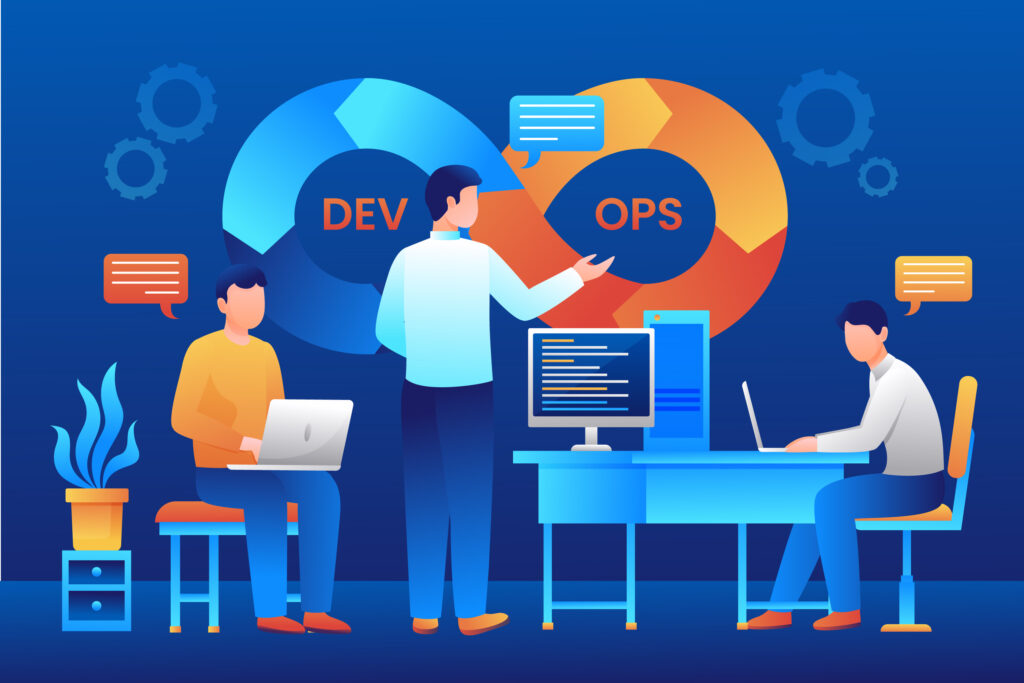There’s a quiet shift happening in how modern software gets built and shipped. It’s not just about writing better code anymore—it’s about building smarter pipelines, scaling with zero friction, and delivering experiences that feel seamless.
At the center of this transformation? Cloud-Native DevOps.
It’s not just a buzzword salad. It’s a mindset + toolkit that’s redefining how engineering teams think about scalability, automation, and performance in the cloud era.

So… What Exactly Is Cloud-Native DevOps?
Let’s break it down:
Cloud-Native means your apps are built to live, breathe, and thrive in the cloud. Think microservices, containers (hello, Kubernetes!), and APIs.
DevOps is the culture and tooling that fuses development and operations, allowing teams to ship faster, with fewer errors.
When these two worlds collide, magic happens. You don’t just run code—you create adaptive systems that scale, heal, and respond in real time.
Why Traditional Setups Can’t Keep Up
Old-school monoliths and on-prem deployments might have worked once, but they’re slow, fragile, and hard to scale. You patch, reboot, and pray. Rollouts take weeks. Outages feel like earthquakes.
That’s where Cloud-Native DevOps flips the script. Here’s how it solves three of the biggest pain points:
1. Scalability: Elastic, Not Elastic-Band
In a traditional setup, traffic spikes cause heartburn. Your app slows down. You scramble for capacity. With Cloud-Native DevOps, that stress disappears.
Cloud-native architectures are designed for horizontal scaling. That means:
Need more compute? Spin up more containers automatically.
Experiencing regional demand? Deploy closer to users via multi-region support.
Traffic drop? Auto-scale down to reduce cost.
And when you combine container orchestration tools like Kubernetes with DevOps practices, you can manage this scaling without ever logging into a server.
Scalability becomes not just a feature—but a fluid response to demand.
2. Automation: Code, Ship, Repeat (Without Losing Sleep)
The more manual your pipeline, the more room for error. Cloud-Native DevOps eliminates the “human bottleneck” with powerful automation at every layer:
CI/CD Pipelines: Push code and automatically trigger builds, tests, and deployments.
Infrastructure as Code (IaC): Spin up entire environments using YAML or Terraform scripts—no more snowflake servers.
Automated Rollbacks: If something breaks, auto-revert to a stable version without downtime.
This isn’t just about saving time (though that’s a huge bonus). It’s about creating consistency and confidence in every deployment.
Automation doesn’t mean less control—it means more predictable outcomes.
3. Performance: Always On, Always Optimized
Performance in the cloud is no longer just about uptime—it’s about adaptive, self-healing systems.
Cloud-native observability tools like Prometheus, Grafana, and AWS CloudWatch allow teams to:
Monitor real-time metrics (latency, errors, memory usage)
Set smart alerts
Auto-remediate issues based on triggers (e.g., restart a failing container automatically)
Paired with DevOps culture, these tools enable continuous improvement. You’re not just reacting—you’re optimizing proactively.
Slow load times? You see it coming before users feel it.
Real-Life Scenario: eCommerce in Action
Let’s say you run an eCommerce app. During Black Friday, traffic surges 10x.
A traditional setup? You’d need weeks of prep, over-provisioning resources, and still risk crashing under pressure.
With Cloud-Native DevOps?
Kubernetes auto-scales your pods across cloud instances.
Your CI/CD pipeline pushes minor UI changes in real time.
Observability dashboards monitor every checkout funnel for issues.
It’s not a sprint to survive traffic—it’s a system built to thrive in chaos.
Getting Started with Cloud-Native DevOps
If you’re thinking, “This sounds great, but where do we even begin?” — here’s a starting roadmap:
Break the Monolith
Start by identifying services that can be modularized into microservices or containers.Adopt CI/CD
Set up Git-based triggers for automated testing and deployment.Use IaC
Tools like Terraform or Pulumi help you create repeatable, versioned environments.Add Observability
Integrate metrics, logs, and tracing into your stack—early.Shift Culture
DevOps is 30% tooling and 70% mindset. Encourage collaboration, transparency, and fast feedback loops.
Cloud-Native DevOps isn’t just a tech upgrade—it’s a competitive advantage.
In today’s fast-paced world, businesses that can scale instantly, automate everything, and deliver top-tier performance are the ones that win. Whether you’re running a global app or a growing SaaS platform, this model gives you the edge to build, ship, and scale without breaking a sweat.
Ready to move fast and stay resilient?
Then it’s time to go cloud-native—with DevOps leading the charge.




